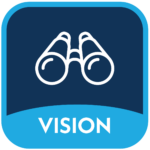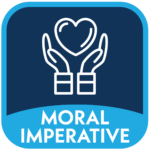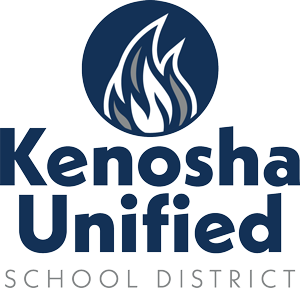
District Improvement Plan


Provide excellent, challenging learning opportunities and experiences that prepare each student for success.

To be Wisconsin’s top performing urban school district that is highly regarded for continuously exceeding all expectations.

All students will have an equal opportunity to prepare for college and/or careers with the support of highly qualified educators in a learning environment that is resource rich, safe, and welcoming.
District Goal 1: Student Achievement
By spring 2027, the district will increase the percentage of students scoring proficient or advanced in reading and math by 12% as measured by the state assessment.
Strategy 1: Ensure that all students receive high-quality instruction, grade-level content, deep engagement and high expectations through the effective use of data.
- Implement professional development for elementary staff to progress monitor the application of year one focus area skills intended to increase reading content knowledge, high-quality instructional techniques, and leadership skills in developing systems.
- Implement professional learning for secondary staff to enhance knowledge and application of strategies that shift instructional practice.
- Conduct learning walks to support staff in implementing high-quality instructional strategies.
- Implement and monitor Tier 3 interventions to reduce learning gaps in reading and math for students.
- Align support and focus on school improvement plans by fostering collaboration among School Leadership, Teaching and Learning, and schools.
Strategy 2: Cultivate a safe, positive learning environment.
- Provide professional learning to increase staff knowledge and skills that create a safe and positive learning environment.
- Conduct Learning Walks to support the implementation of high-quality instructional strategies, equipping educators with effective culture-building strategies.
Strategy 3: Foster and strengthen family and community engagement.
- Increase parent/guardian confidence in their child’s learning by partnering with three Title I schools to deliver school-based family education programs in collaboration with the Community Relations Department.
- Increase school-community engagement by prioritizing participation in community events.
- Expand volunteer opportunities through the implementation of a volunteer platform.
- Collect and apply family feedback through surveys, using the results to develop additional action steps that strengthen family engagement and involvement.

District Goal 2: Fiscal Responsibility
Engage in an inclusive and transparent process with the school board, staff, administration, and public to create recommendations that result in an annually balanced budget.
Strategy 1: Implement budget prioritization sessions
![]() In Progress: Engage administrators and stakeholders in two to four work sessions to support establishing budget priorities with feedback.
In Progress: Engage administrators and stakeholders in two to four work sessions to support establishing budget priorities with feedback.
Strategy 2: Implement transparent budget development practices.
![]() In Progress: Facilitate weekly Leadership Council budget development sessions incorporating district priorities that will result in balanced budget scenarios.
In Progress: Facilitate weekly Leadership Council budget development sessions incorporating district priorities that will result in balanced budget scenarios.
![]() In Progress: Present the budget to the Board of Education in open meetings to allow for a clear and transparent approval process.
In Progress: Present the budget to the Board of Education in open meetings to allow for a clear and transparent approval process.
Strategy 3: Implement and support effective budget management practices.
![]() In Progress: Provide ongoing professional learning and support for budget managers to support accurate error free balanced department and school-level budgets.
In Progress: Provide ongoing professional learning and support for budget managers to support accurate error free balanced department and school-level budgets.
![]() In Progress: Annually review and implement written budget management procedures to increase staff understanding and reduce corrections needed by finance.
In Progress: Annually review and implement written budget management procedures to increase staff understanding and reduce corrections needed by finance.

District Goal 3: Effective and Engaged Workforce
Retain and recruit highly qualified staff who work to ensure the success of every student.
Strategy 1: Recruit highly qualified staff who work to ensure the success of every student.
![]() In Progress: Implement workforce promotion activities to increase the number of qualified applicants for each position.
In Progress: Implement workforce promotion activities to increase the number of qualified applicants for each position.
![]() In Progress: Participate in recruitment fairs to increase qualified applicants for open positions.
In Progress: Participate in recruitment fairs to increase qualified applicants for open positions.
![]() In Progress: Develop and implement recruitment activities to increase the number of positions filled with qualified candidates.
In Progress: Develop and implement recruitment activities to increase the number of positions filled with qualified candidates.
![]() In Progress: Collaborate and coordinate with community partners to increase the number of individuals completing student teaching, clinical observations, and Educator Prep programs with the district.
In Progress: Collaborate and coordinate with community partners to increase the number of individuals completing student teaching, clinical observations, and Educator Prep programs with the district.
Strategy 2: Reduce the predictability that historically marginalized students will be served by an out-of-field or inexperienced teacher.
![]() In Progress: Utilization of exit interviews will increase understanding of separation decisions.
In Progress: Utilization of exit interviews will increase understanding of separation decisions.
![]() In Progress: Utilization of job satisfaction interviews created with an outside agency to be used with sample groups will increase overall employee job satisfaction.
In Progress: Utilization of job satisfaction interviews created with an outside agency to be used with sample groups will increase overall employee job satisfaction.
![]() In Progress: Utilization of WISEdata to analyze out-of-field or inexperienced teacher distribution will increase the number of appropriately licensed teachers hired, the percentage of appropriately licensed teachers hired at high poverty schools, and the number of teachers with at least three years of experience.
In Progress: Utilization of WISEdata to analyze out-of-field or inexperienced teacher distribution will increase the number of appropriately licensed teachers hired, the percentage of appropriately licensed teachers hired at high poverty schools, and the number of teachers with at least three years of experience.
Strategy 3: Increase the diversity of newly hired staff.
![]() In Progress: Analyzation of historical data will increase the number of applicants for each position through attendance at career fairs.
In Progress: Analyzation of historical data will increase the number of applicants for each position through attendance at career fairs.
![]() In Progress: Implementation of Educator Effectiveness to support teacher growth and professional learning needs will increase filled positions and applicants hired.
In Progress: Implementation of Educator Effectiveness to support teacher growth and professional learning needs will increase filled positions and applicants hired.
![]() In Progress: Development for “Grow Your Own” pathways for educational support and administrative support professionals will increase the number of professional pathways in the district.
In Progress: Development for “Grow Your Own” pathways for educational support and administrative support professionals will increase the number of professional pathways in the district.
